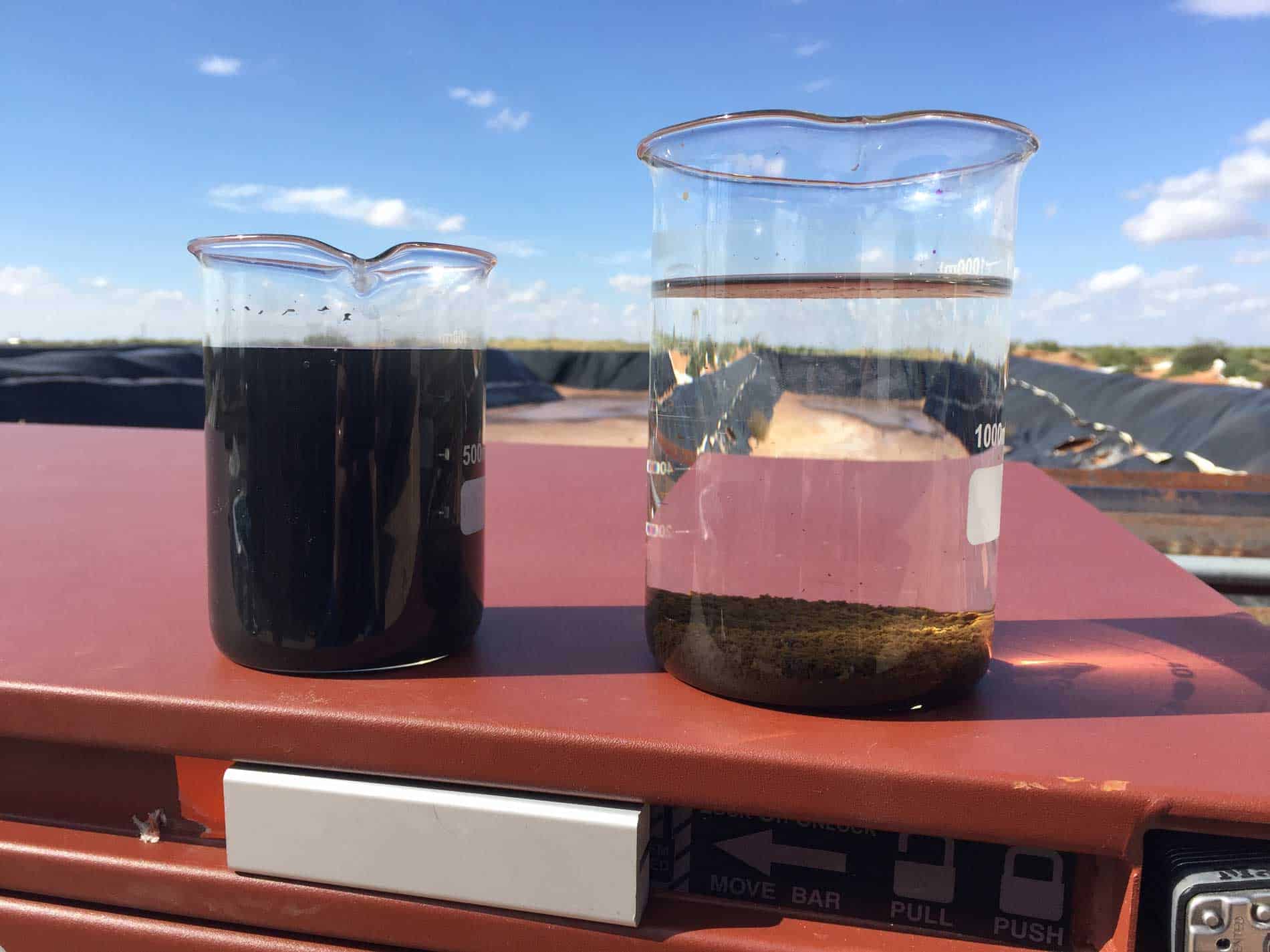NF EN ISO 10301 Volatile Organic Compounds in Water GC Test
The NF EN ISO 10301 standard provides a method for determining volatile organic compounds (VOCs) in water samples using gas chromatography. This method is crucial in the oil and gas sector, particularly in produced water analysis where VOCs can indicate contamination or provide insights into hydrocarbon migration.
The process involves several stages: sample preparation, injection into the GC instrument, separation of volatile organic compounds based on their boiling points, detection using a mass selective detector (MSD), and finally quantification. The standard specifies precision, accuracy, and repeatability to ensure that results are reliable and comparable across different laboratories.
The importance of this test lies in its ability to detect trace levels of VOCs which may not be visible through other methods like colorimetric or spectrophotometric testing. These compounds can include benzene, toluene, ethylbenzene, xylene isomers (BTEX), and others that are common in oilfield operations.
Compliance with this standard ensures adherence to environmental regulations and helps companies manage their operational impacts on the environment effectively. By identifying VOCs early during production processes or after wastewater treatment, operators can take corrective actions before they lead to significant ecological harm.
The test procedure typically starts by collecting a representative sample from the source being analyzed. This could be produced water from a well site or process water used within refinery facilities. Once collected, these samples undergo rigorous preparation steps that involve dilution if necessary and filtration to remove particulates which might interfere with the chromatographic separation.
The prepared sample is then introduced into the gas chromatograph where it vaporizes and passes through an analytical column packed with stationary phase material. As different components of the mixture elute from this column at varying rates depending on their affinity for the stationary phase, they are detected by the MSD as they pass through it.
For accurate quantification, calibration curves must be generated prior to analysis using known concentrations of target VOCs. These calibrations allow us to convert detector responses into actual compound concentrations present in our samples. It's important to note that this method is highly sensitive and capable of detecting even parts per billion (ppb) levels of some compounds.
The results obtained from performing this test are critical for several reasons: they help determine the effectiveness of pollution control measures implemented by companies; they serve as evidence in regulatory compliance audits; and most importantly, they guide decision-making processes related to environmental protection efforts. Regular monitoring using such tests allows industries to stay ahead of potential risks associated with VOC emissions.
In summary, NF EN ISO 10301 represents a robust approach towards ensuring accurate measurement of volatile organic compounds in water samples. Its implementation not only enhances operational efficiency but also contributes positively towards sustainable development goals by promoting responsible resource management practices within the oil and gas sector.
Benefits
The NF EN ISO 10301 test offers numerous benefits to companies operating in the oil and gas industry, especially those involved with produced water or process water analysis. Firstly, it provides precise measurements of volatile organic compounds (VOCs), which allows for better understanding of potential contamination sources.
- Early detection of VOCs enables proactive management strategies aimed at minimizing environmental impact.
- Compliance with international standards ensures confidence in regulatory audits and inspections.
- Data generated supports informed decisions regarding pollution control measures, leading to improved operational efficiency.
Secondly, this method enhances safety by identifying hazardous substances that could pose risks during transport or disposal processes. Thirdly, it contributes significantly towards sustainable practices through continuous monitoring of water quality parameters such as pH levels and turbidity.
In addition, the test results contribute valuable information for research purposes, aiding in understanding the behavior of VOCs under various conditions. This knowledge can be instrumental in developing new technologies aimed at reducing emissions further down the line. Lastly, consistent adherence to this standard fosters trust among stakeholders including customers, investors, and regulatory bodies.
Overall, implementing NF EN ISO 10301 in your workflow translates into safer operations, enhanced reputation management, and better resource utilization across all aspects of business activity within the oil and gas sector.
Quality and Reliability Assurance
The quality and reliability assurance processes associated with conducting NF EN ISO 10301 tests are essential components of maintaining consistent accuracy and precision. These measures ensure that every test conducted adheres strictly to the specified methodology outlined in the standard.
To begin, laboratories must undergo certification from accredited bodies like UKAS (United Kingdom Accreditation Service) or equivalent international organizations. This certification guarantees adherence to ISO/IEC 17025:2017 requirements which dictate stringent quality assurance practices throughout all laboratory operations.
During sample preparation, strict protocols are followed ensuring no cross-contamination between samples. Each step from sampling through to final reporting is documented meticulously using standardized forms and checklists. This documentation serves as proof of compliance during internal audits or external inspections.
The actual testing itself relies heavily on state-of-the-art equipment calibrated regularly against national standards. All instruments used, including gas chromatographs (GCs), mass selective detectors (MSDs), and related accessories, are maintained according to manufacturer guidelines. Regular maintenance schedules include cleaning, recalibration, and validation of methods.
In addition, laboratories employ trained personnel who undergo continuous education programs focused on staying updated with the latest developments in analytical techniques. These professionals play a crucial role in interpreting results correctly and providing actionable insights based on findings.
Finally, quality control measures are implemented at every stage of testing to catch any anomalies early on. This includes routine checks during sample preparation, frequent re-runs of key tests, and independent verification by second analysts whenever possible. By integrating these rigorous quality assurance practices into daily operations, laboratories ensure that their results remain trustworthy and reliable.
Implementing such robust QA protocols not only upholds the integrity of individual test results but also builds confidence among clients, stakeholders, and regulatory authorities alike. It demonstrates commitment to excellence in analytical services which ultimately translates into enhanced credibility and reputation for any organization operating within this sector.





